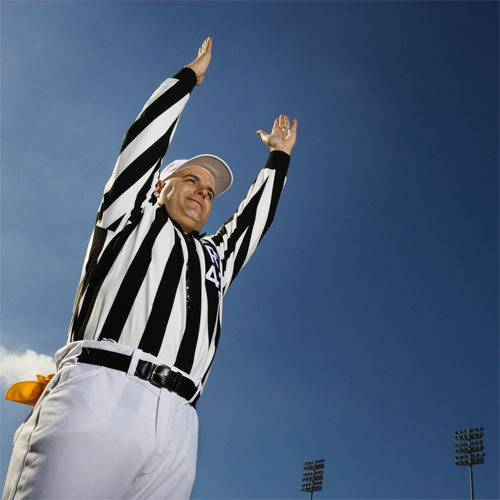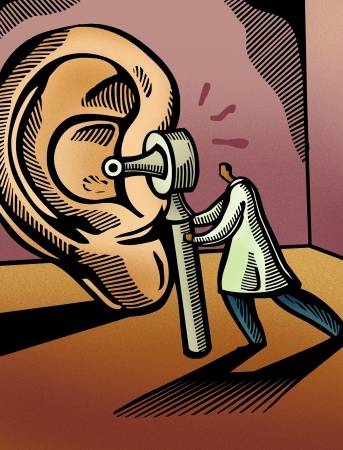
Zebra
Somewhere in, NJ
Male, 62
I've officiated football for over 30 years, now in my 26th on the college level. I've worked NCAA playoffs at the Division II and III level. In addition, I've coached at the scholastic level and have been an educator for over 35 years. I have no interest whatsoever in being an NFL official! Ever!
Placed at the one in the NFL, at the 2 in NCAA play. If there was a false start, then there was no play. Yes, the five-yard penalty is enforced and then the offense runs the untimed down from the 6 or 7, depending on the level. In high school, it is simply a 15 yard penalty from the previos spot.
If a player "gives himself up" (clearly indicates he is not running it out), the referee will whistle the play dead. Tossing it to the ball boy likely occurred after the whistle blew.
Yes. The axiom is "a kick is a kick is a kick". If K touches the ball, it is "illegal" or "first" touching, depending on the level (HS, NCAA). But the ball as you describe it is still considered a kick, so being downed in the endzone makes it a touchback.
Once the punter has kicked and recovers and goes to be involved in the play (going after/tackling a runner) he's a player and is no different than any other player. Same with a QB after an interception. If the QB goes to tackle and participates in the play, he's fair game. If he just stands there, then you can't hit him.
Freelance Writer
Call Center Employee (Retail)
 When do your policies allow you to hang up on a rude caller?
When do your policies allow you to hang up on a rude caller?
Audiologist
 Can just one loud concert do serious damage to your ears?
Can just one loud concert do serious damage to your ears?
While unusual, it's the right thing to do. It may be that the official, possibly getting to it late or the offense ran the play quickly, was in the process of counting when the play went off. Yes, the official should be counting "faster" but the idea is to get it right. He did. If the official thought he had 12, a less than perfect solution could be to stop play if he thinks he has 12, count, then flag it. If there are 11, play on.
The defense had a problem. The offense will accept the penalty for offside and the down will be replayed. Tough luck.
I'm anot official, not a football historian.
-OR-
 Login with Facebook
Login with Facebook (max 20 characters - letters, numbers, and underscores only. Note that your username is private, and you have the option to choose an alias when asking questions or hosting a Q&A.)
(A valid e-mail address is required. Your e-mail will not be shared with anyone.)
(min 5 characters)
By checking this box, you acknowledge that you have read and agree to Jobstr.com’s Terms and Privacy Policy.
-OR-
 Register with Facebook
Register with Facebook(Don't worry: you'll be able to choose an alias when asking questions or hosting a Q&A.)